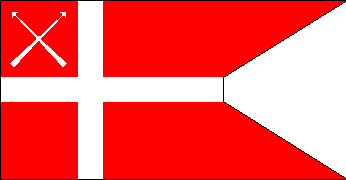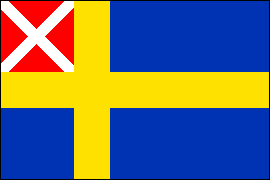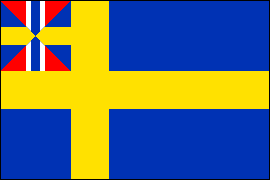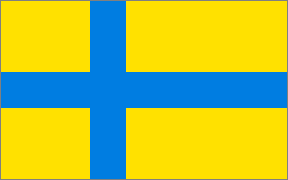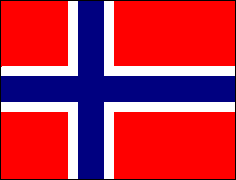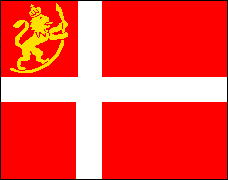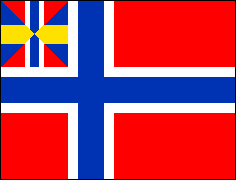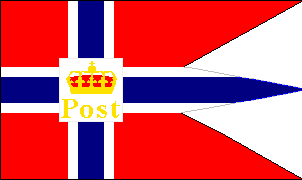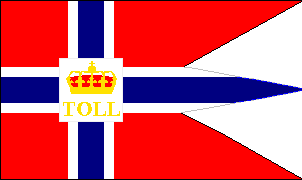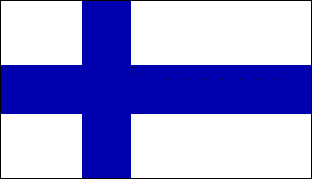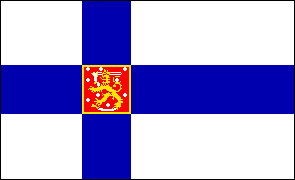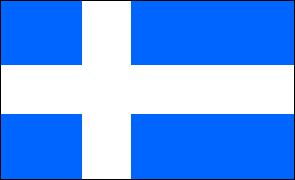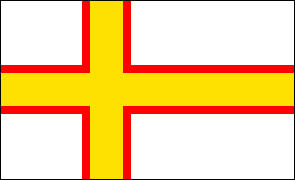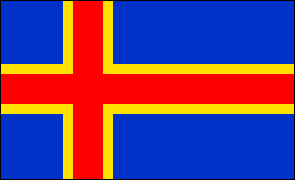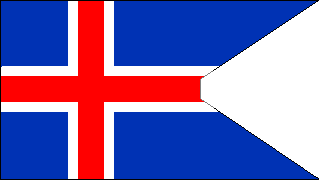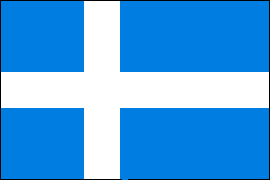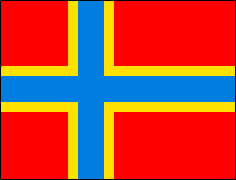THE SCANDINAVIAN CROSS
FLAGS OF THE NORDIC NATIONS
The national flags of the Nordic countries (Denmark, Finland, Iceland, Norway, Sweden) form a recognizable "flag family," all being based on the so-called Scandinavian cross. This is simply a cross with the vertical arm offset toward the hoist of the flag. It probably first appeared on Scandinavian flags and banners in the 13th century, and it became firmly established as the national flag of Denmark from the sixteenth century onward. The modern flag of Sweden took form at about the same time, though historians are generally agreed that the Danish flag—the Dannebrog—is the oldest national flag in current use. The flags of the other Nordic countries were based on the Swedish and especially the Danish flags.
Another flag design feature characteristic of the Nordic countries is the use of a forked or swallowtailed variant of the national flag for official purposes. In Sweden and Denmark these forked flags originated as royal flags and war ensigns; they thus symbolized the authority of the state. This tradition has been carried forward by all the Nordic countries, which use forked flags as their naval ensigns and, usually with the addition of a badge, as the flag or ensign of government departments. An exception is Finland, where the forked flag is reserved for the armed forces only. Other government authorities use the national flag with the Finnish coat of arms at the intersection of the cross. Some examples of these government ensigns are illustrated below.
Finland, Iceland and Norway were at one time dependencies of either Denmark, Russia or Sweden and did not gain full independence until the twentieth century. In all these countries, patriotic sentiment was expressed in part via the demand for a "pure" national flag. In each case the design eventually adopted was based on the Scandinavian cross.
The Scandinavian cross also figures in the design of numerous sub-national and regional flags of the Nordic countries. Some, like those of the Åland and Faroe Islands, are officially recognized; other are traditional, popular or proposed and have no legal status. Additionally, the United Kingdom's Shetland Islands and Orkney Islands, which were once part of the Kingdom of Norway, have regional flags of the Scandinavian cross type. Some examples of these sub-national flags are illustrated below.
